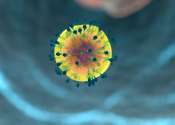Scientists uncover mysterious workings of cholera bacteria
Researchers have found that an enzyme in the bacteria that causes cholera uses a previously unknown mechanism in providing the bacteria with energy. Because the enzyme is not found in most other organisms, including humans, ...





